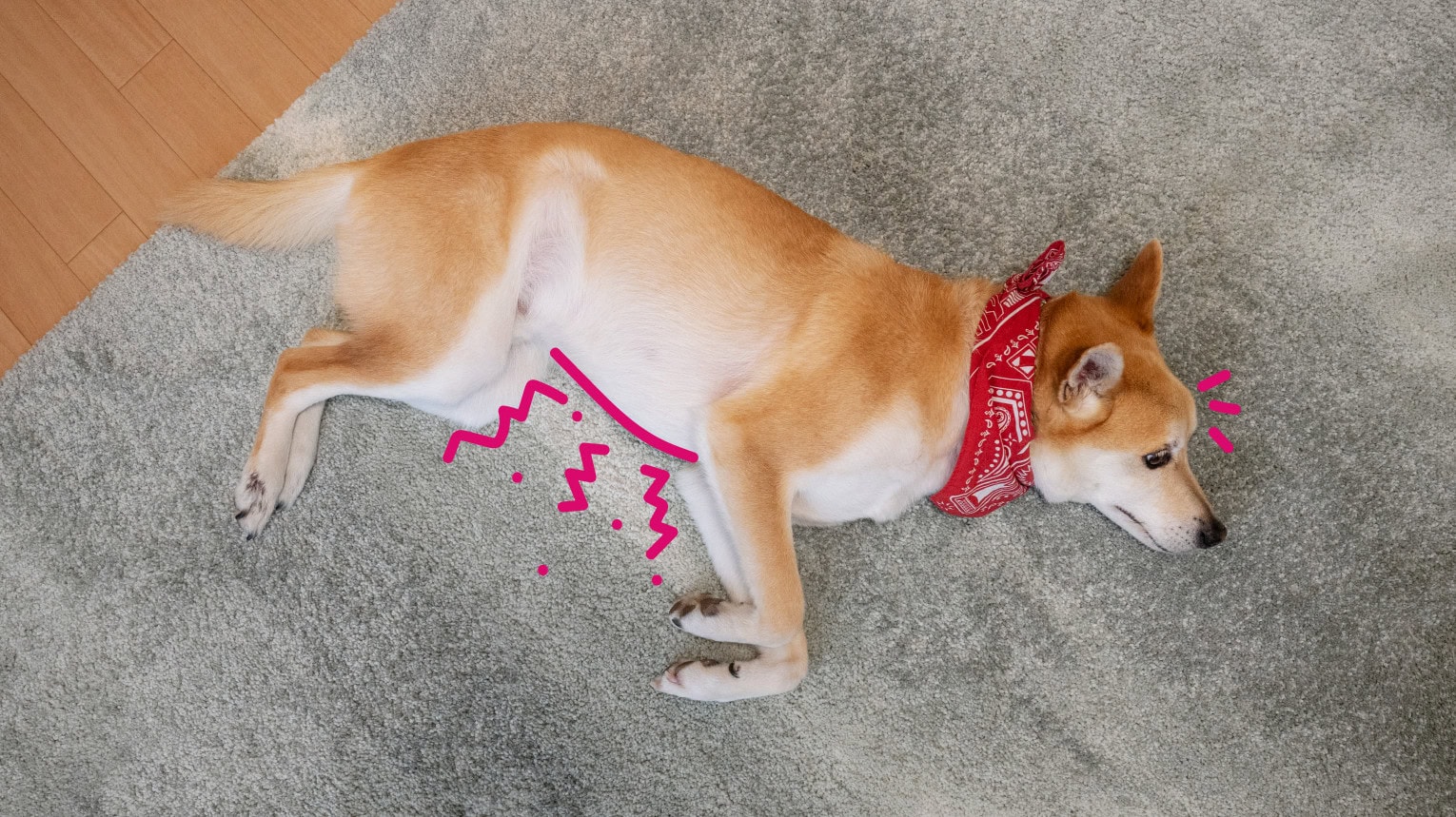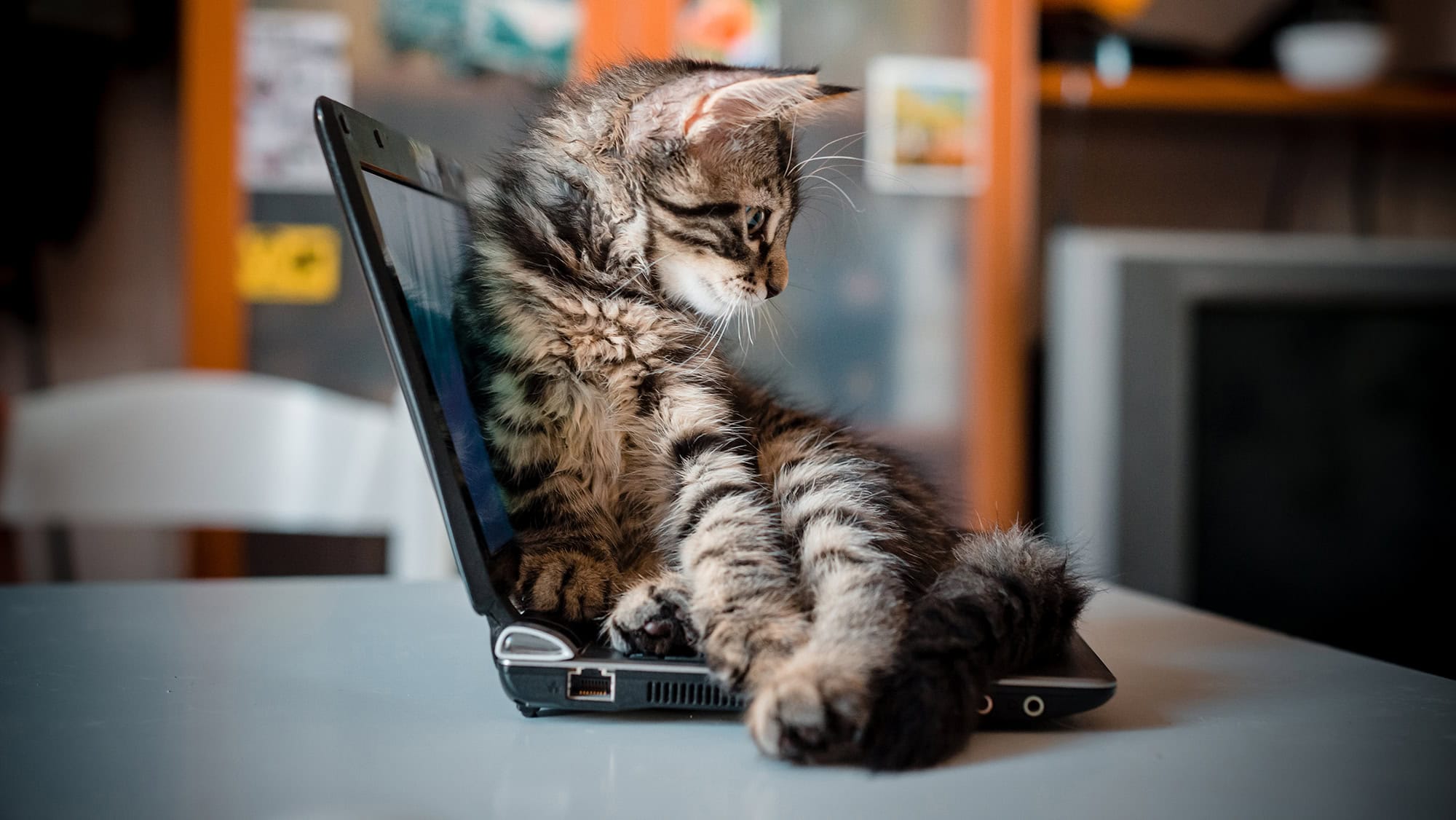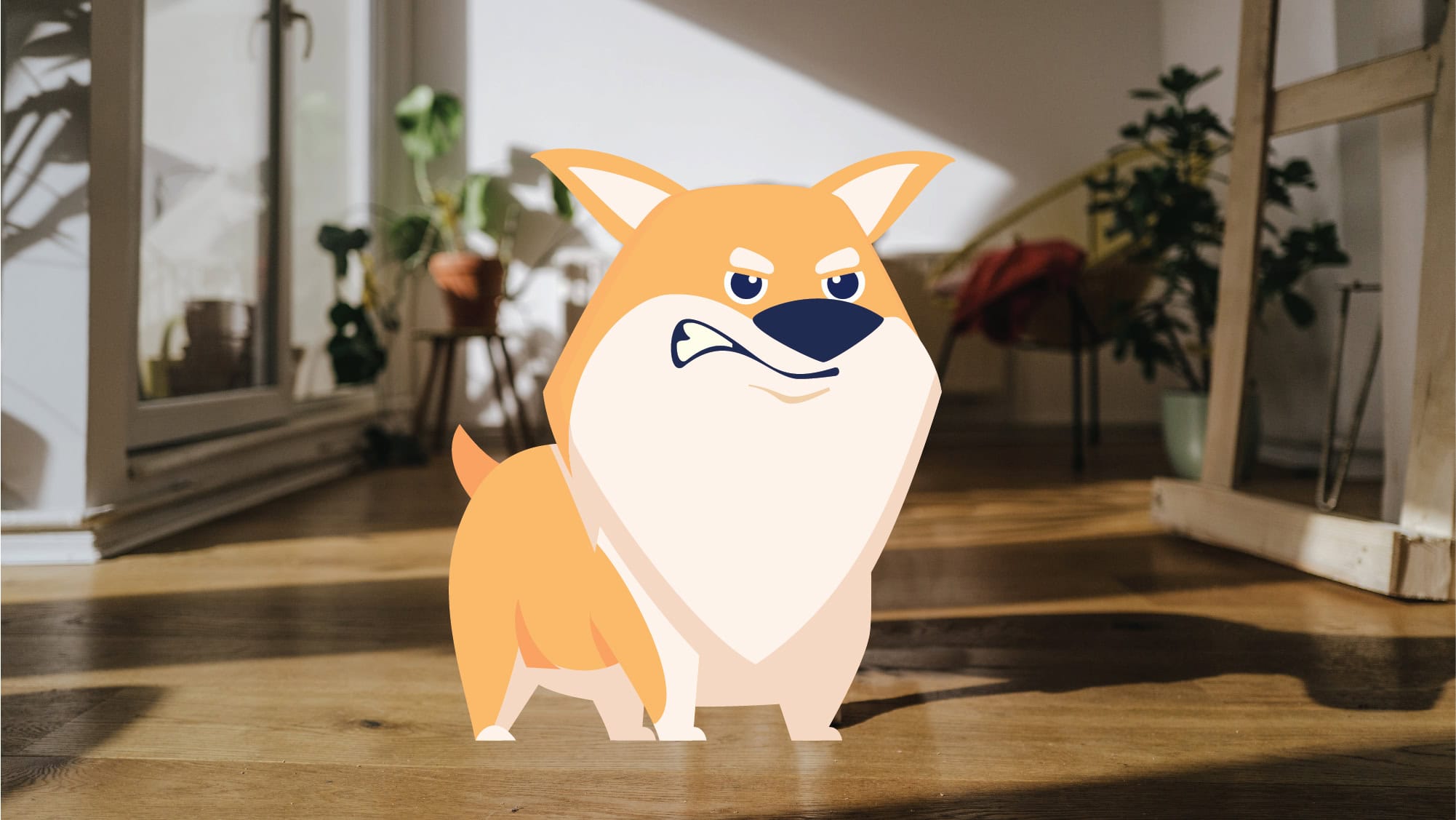Bloat is a frightening and surprisingly common condition in dogs that can be life-threatening. As a veterinarian, I believe all dog parents should be aware of the causes and signs of bloat as well as learn how to prevent it.
By familiarizing yourself with bloat, you can get your dog the medical care they need in the event of an emergency.
What is Bloat in Dogs?
Bloat, also known as gastric dilatation-volvulus (GDV), is a condition that occurs when a dog’s stomach rapidly fills with gas, food, or fluid and then twists on itself. This “stomach flip (called volvulus) severs blood flow to the stomach and potentially other vital organs. The lack of blood supply triggers a state of shock and the release of harmful toxins throughout the body.
A study by Purdue University determined that a dog’s risk of bloat increases by 20% with each passing year. Because GDV develops without warning and progresses rapidly, immediate veterinary attention is critical for a dog’s survival.
Can Puppies Suffer from Bloat?
While bloat is more commonly diagnosed in adult dogs, it’s important to remember that puppies can also be susceptible. Puppies are vulnerable to bloat due to their playful nature. The combination of eating a large meal and then engaging in vigorous exercise can put them at risk. Rapid eating can also be a contributing factor for puppies.
The Causes of Bloat in Canines
Bloat is caused by various factors such as rapid eating, overeating, drinking large amounts of water quickly, stress, and certain breeds being more predisposed. Understanding these causes is crucial for prevention and early detection.
Let’s break down the major causes of bloat in dogs and puppies:
Breed Predispositions
Nearly all breeds are at risk of developing bloat, but large breeds with deep chest are more commonly affected, these include;
-
Great Danes
-
German Shepherds
-
Standard Poodles
Eating Too Quickly
Eating quickly can contribute to bloat as the stomach distends quickly as more air is often swallowed, and stomach emptying can be delayed further contributing to stomach distention.
Drinking Too Much at One Time
Dogs that drink a large quantity of water in a short period of time can rapidly distend the stomach, especially after eating.
Overeating
Overeating or eating one large meal per day can contribute to bloat in dogs.
Exercising After Eating
It’s important for a dog to have time for proper digestion before exercising. Strenuous play, swimming, or running after eating can predispose dogs to develop GDV.
Raised Food Bowls
It is speculated that raised food bowls can contribute to bloat by allowing more air to be swallowed during eating. Raised bowls may also alter a pet’s natural positioning and increase pressure in the abdominal cavity when eating.
Stress
Anxious dogs are thought to be more prone to developing bloat, as are dogs in stressful situations and environments such as boarding kennels. A stressed dog may eat more rapidly and swallow more air than when they are relaxed. Stress can also cause a release in the hormones that affect digestion.
Genetic Factors
Dogs with a family or genetic history of GDV are at a higher risk for experiencing bloat. Increased age can contribute to GDV development due to factors such as:
-
Slower gastric emptying
-
Dental issues preventing normal chewing
-
Weaker stomach muscles
-
Obesity
-
Changes in eating habits
-
Underlying medical conditions
Signs of Bloat in Dogs
Recognizing the early signs of bloat is crucial for getting your dog the lifesaving veterinary care they need.
Let’s explore some of the key symptoms to watch out for:
- Restlessness
- Pacing
- Swollen or distended abdomen
- Painful abdomen
- Distress
- Retching or attempts to vomit with no success
- Excessive drooling
- Pale gums
- Abnormal posture – hunched back or praying position
- Panting or rapid breathing
- Increased heart rate
- Collapse or inability to stand
Treatment of Bloat
Due to the critical nature of bloat, immediate veterinary intervention is essential. In this section, I will discuss how veterinarians typically approach treatment.
Approaches to treating bloat typically involve:
-
Stabilization of shock
-
Decompression – removing the gas & pressure from the stomach
-
Surgery – if volvulus has occurred, then surgery is required to untwist the stomach or secure the stomach to the abdominal wall to prevent recurrence (also known as gastropexy)
-
Supportive care – IV fluids, pain control, & close monitoring are essential components of post-operative care
-
Early recognition & prompt veterinary intervention are crucial for the best chance of recovery
Preventing Life-Threatening Bloat
While bloat is an urgent medical condition for dogs, the good news is that there are several steps you can take to reduce your dog’s risk factors.
Some important preventative measures against bloat include:
- Feeding smaller, more frequent meals – divide meals into two to three smaller meals per day
- Avoiding vigorous exercise before and after meals – allow time for digestion
- Using slow feeder bowls – these are designed to slow fast-eating dogs down when eating.
- Minimizing stress – keep your dog’s environment calm and stress-free, especially around feeding times
- Avoiding raised dog bowls unless instructed by your veterinarian for a medical condition
- Regular veterinary checkups
- Being attentive to changes in your dog’s behavior and eating habits
Conclusion
Bloat is a serious and potentially fatal condition for dogs, especially large and deep-chested breeds. By familiarizing yourself with the risk factors, symptoms, and preventative measures outlined in this blog post, you can be well-equipped to prevent this medical emergency in your furry friend.
Understanding GDV and implementing preventive strategies can significantly reduce your dog’s risk and help ensure a long, happy, and healthy life together.
Remember: If signs of bloat are seen, act fast and seek veterinary care immediately!
Frequently Asked Questions
How can you prevent bloat in dogs?
Some preventative measures include feeding smaller, more frequent meals throughout the day, restricting activity before and after eating, minimizing stress, and regular veterinary checkups.
What are the first signs of bloat in a dog?
Look for these signs that indicate a dog is suffering from bloat:
- Abdominal distention and tightness
- Retching and gagging without producing vomit
- Restlessness and discomfort
- Excessive salivation or drooling
- Increased respiratory rate
When is canine bloat an emergency?
Canine bloat is always considered an emergency. Even without volvulus (twisting), dogs are at risk of complications. If you notice symptoms – act fast!
Sources
- Bell, J. S. (2014). Inherited and predisposing factors in the development of gastric dilatation volvulus in dogs. Topics in companion animal medicine, 29(3), 60-63.
- Humm, K., & Barfield, D. (2017). Differentiating between food bloat and gastric dilatation and volvulus in dogs. Veterinary Record.





